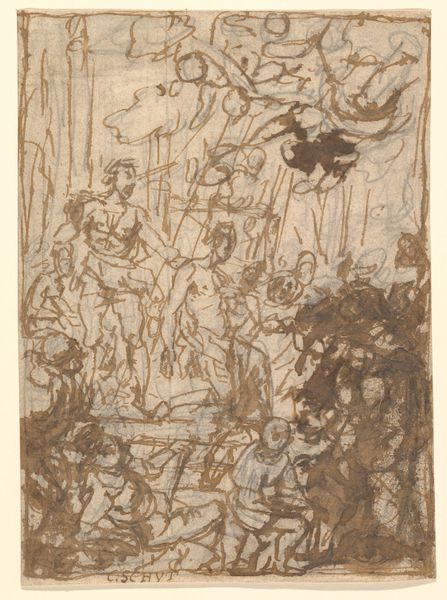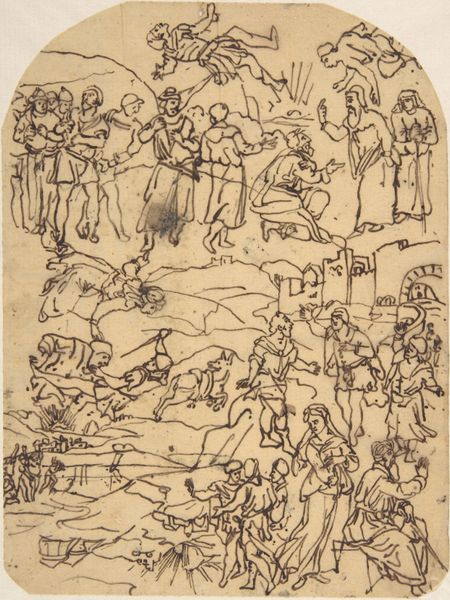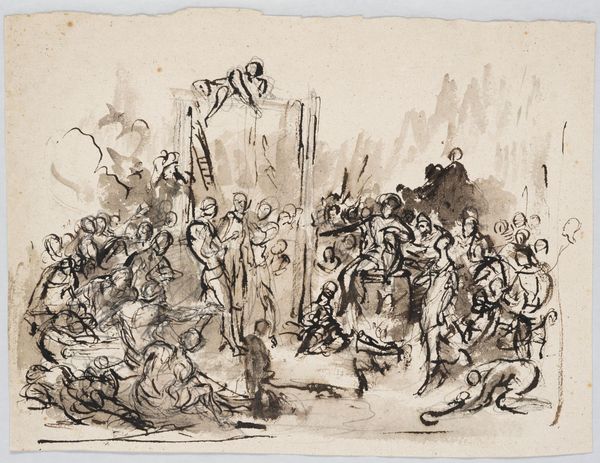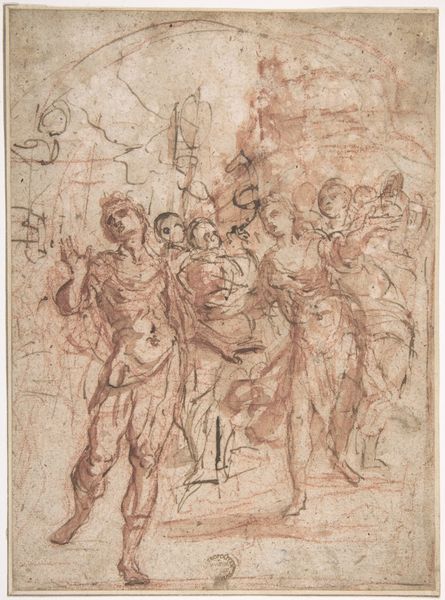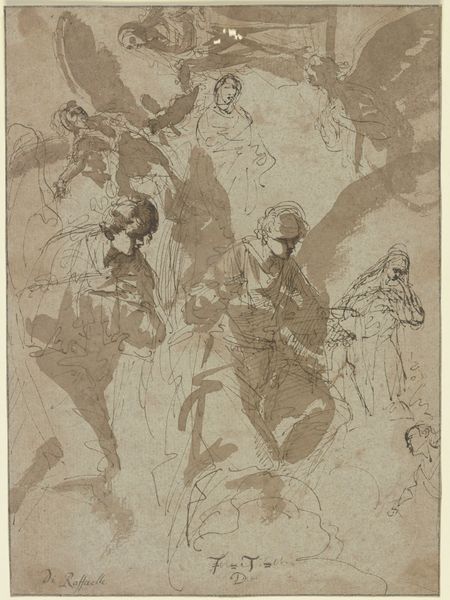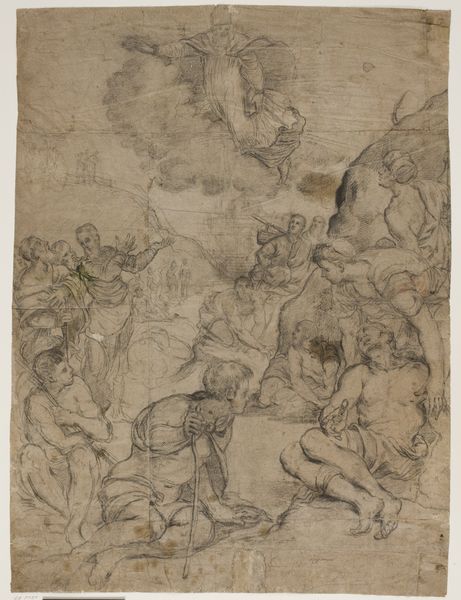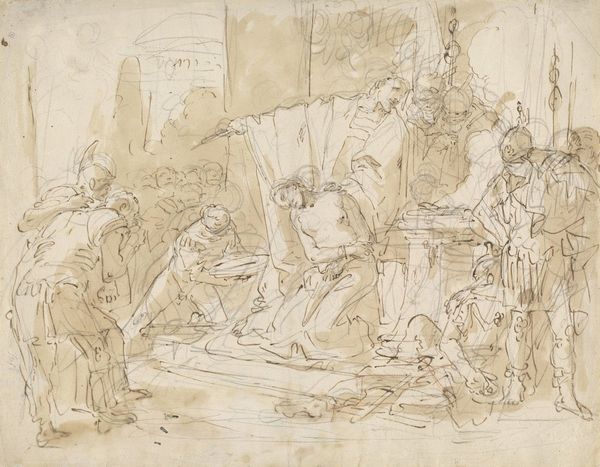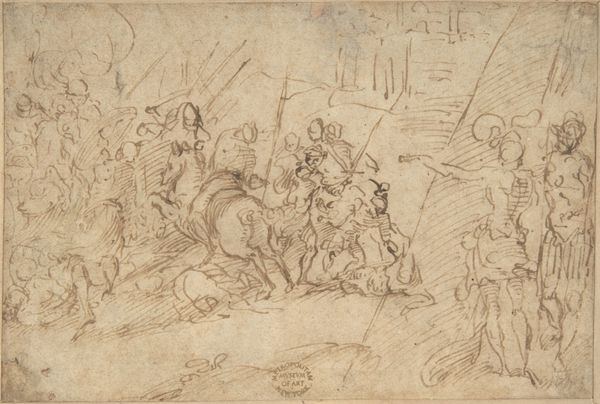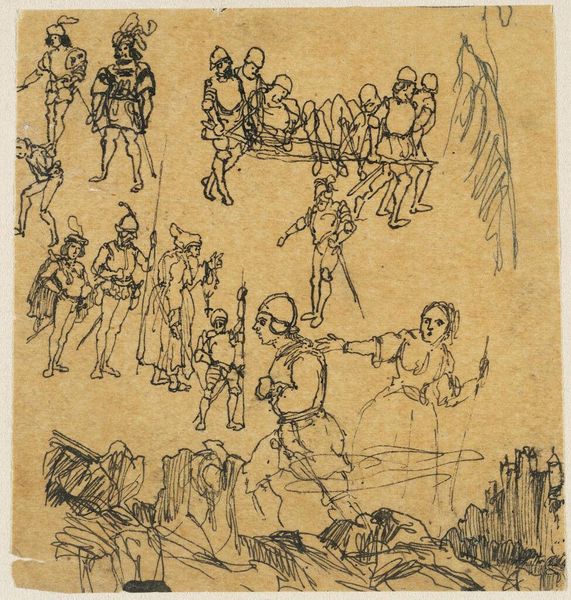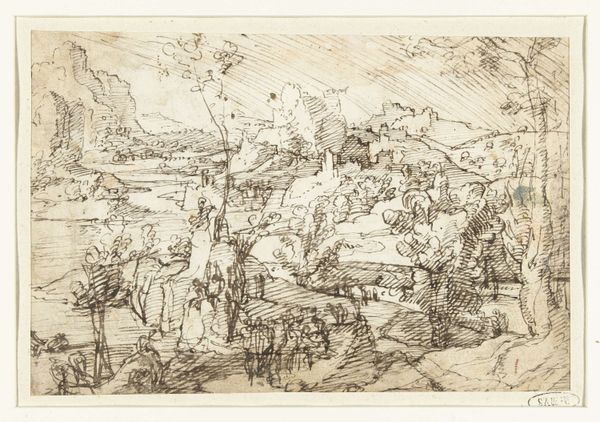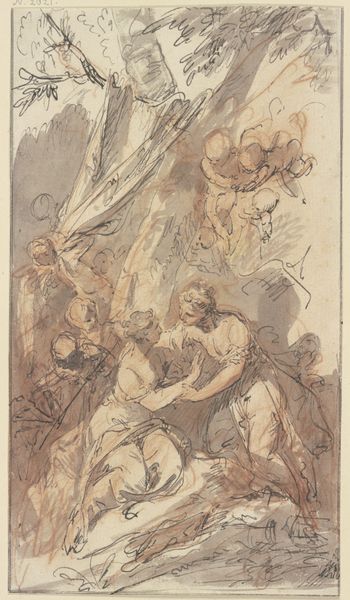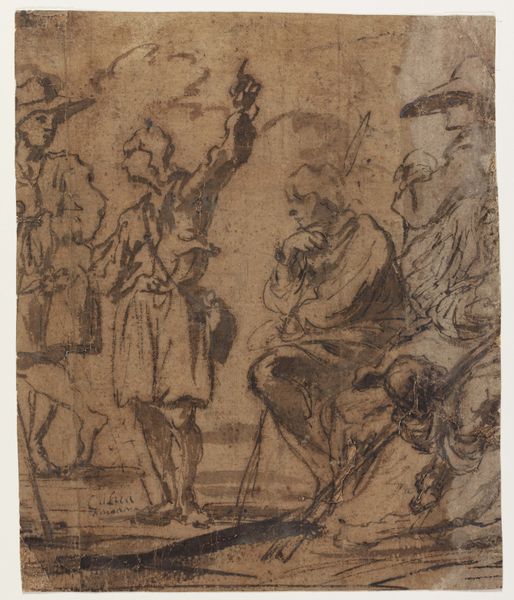
drawing, coloured-pencil, print, paper, pen
#
drawing
#
coloured-pencil
#
narrative-art
#
baroque
# print
#
figuration
#
paper
#
coloured pencil
#
pen
#
history-painting
Dimensions: 7 3/8 x 5in. (18.7 x 12.7cm)
Copyright: Public Domain
Curator: Look at this, the "Scene of Martyrdom," attributed to Giovanni Angelo Canini, dating roughly from 1615 to 1666. It's rendered with pen, coloured pencil and print on paper, a flurry of intense activity. What are your immediate impressions? Editor: Well, it's chaotic, isn't it? Visually quite unsettling. The composition is crammed, almost claustrophobic. The muted colors lend it an air of faded tragedy, like a memory of violence rather than its immediate enactment. Curator: It is definitely an emotional subject rendered with drama. Consider that the baroque style, favored during Canini’s time, sought to evoke feeling, and this work succeeds rather spectacularly, wouldn't you agree? The use of line, the density of the composition all add to the tension. Editor: Absolutely. Martyrdom scenes carry a significant symbolic weight, often associated with faith, sacrifice, and resistance to tyranny. The sword raised above, the body slumped below...it's a tableau we've seen represented across centuries and cultures. What’s particularly fascinating is how Canini uses the coloured pencil, in combination with pen and print. Curator: He uses the coloured pencil work to highlight emotional qualities of the scene, focusing our attention to the power struggles throughout time. There's an inherent critique, too, embedded in how these images circulated within society – as reminders of the cost of defiance, and potentially as rallying points for future dissent. Editor: Exactly, we tend to think of martyrs as purely religious figures, but really they are symbols of devotion to belief in the face of power and potential loss of life. In many ways the message transcends time. The composition focuses your eyes on the drama and gives little focus to context of the act; the ‘who’ and ‘why’ fades to emphasize that moment of choice, will, action, consequence. Curator: I'd agree completely; a universal story about how our beliefs and the dominant culture intertwine and are tested. It makes you wonder about the original audience; the purpose for creating and showing these scenes must surely carry political ramifications, whatever their spiritual function. Editor: Well, considering all of the nuances and the universality that this piece projects, I think that visitors will take with them their own thoughts on devotion and self-sacrifice. I know that it is something that will stick with me for a while. Curator: It has certainly shifted my perception and highlighted the complex dynamics between religious devotion and secular control in the artwork.
Comments
No comments
Be the first to comment and join the conversation on the ultimate creative platform.
